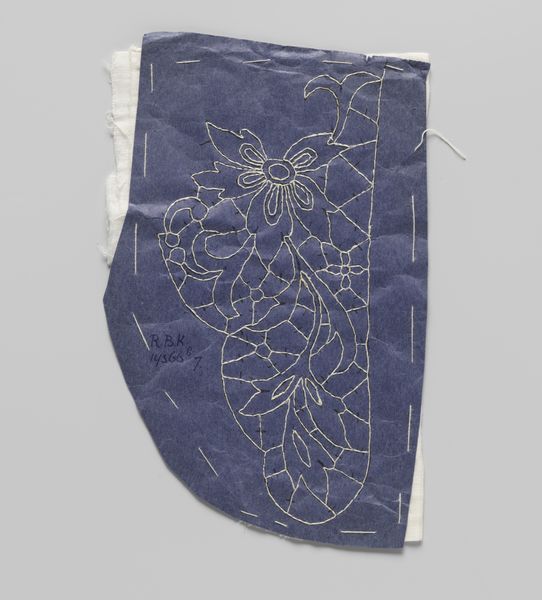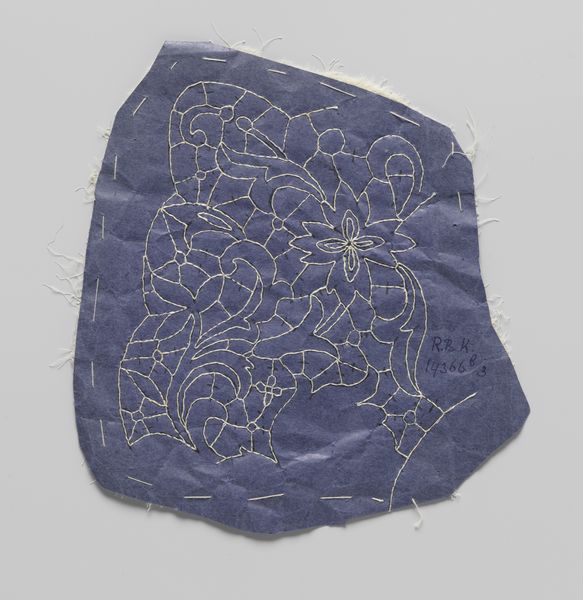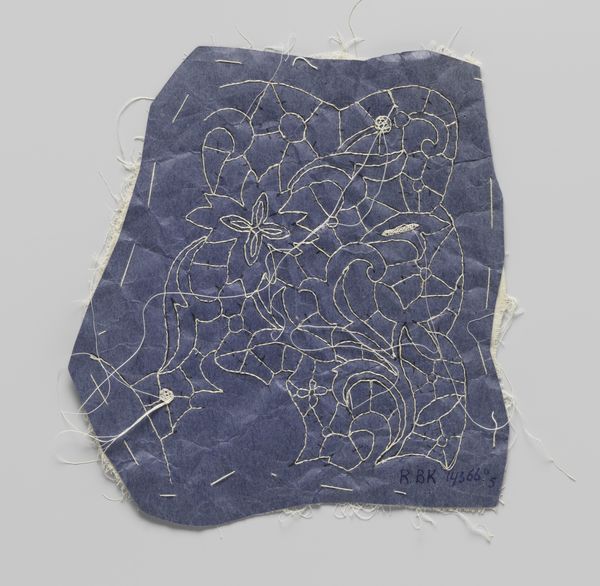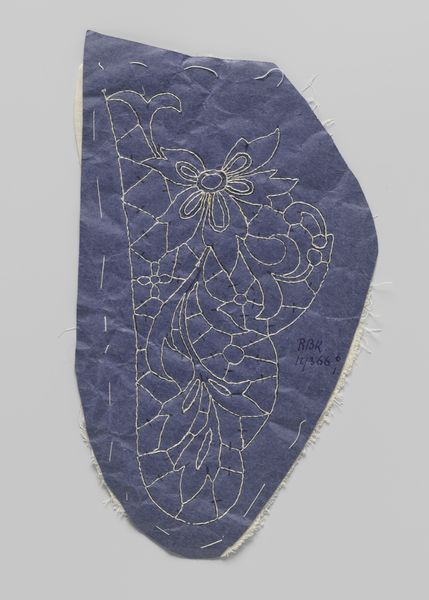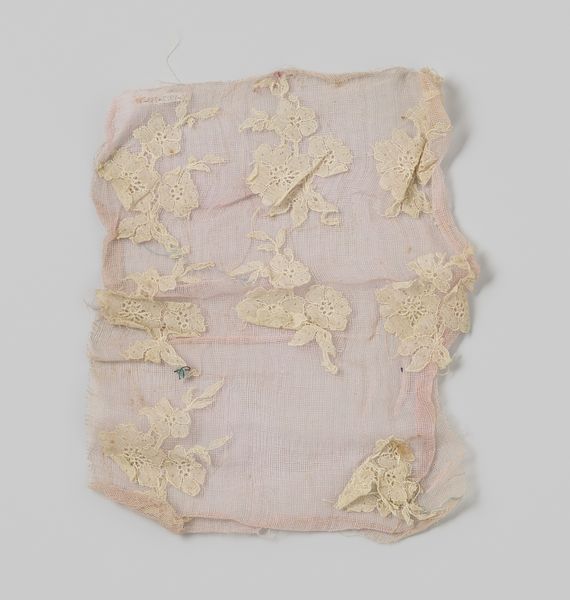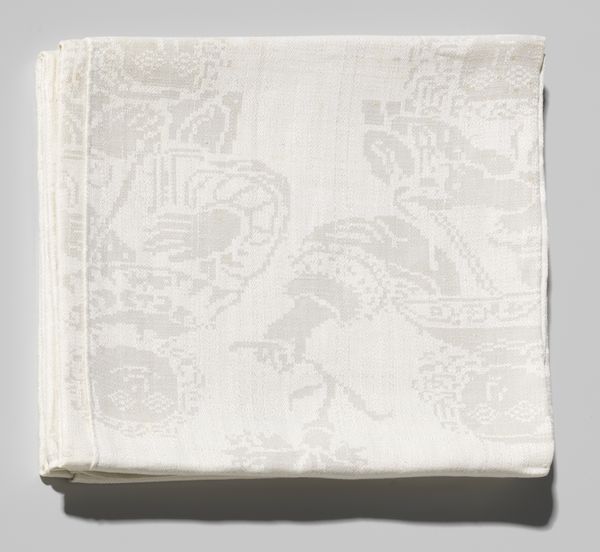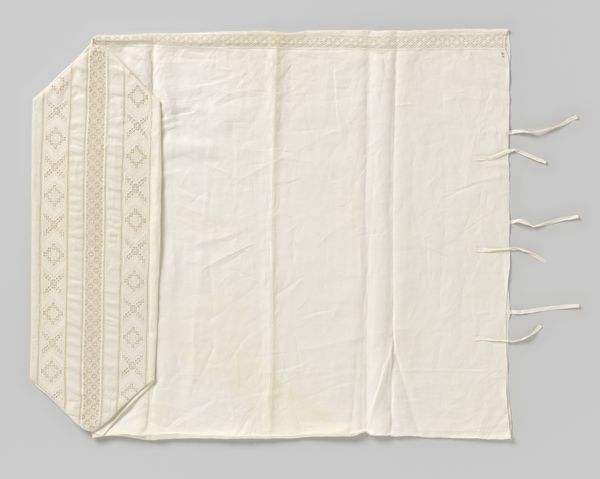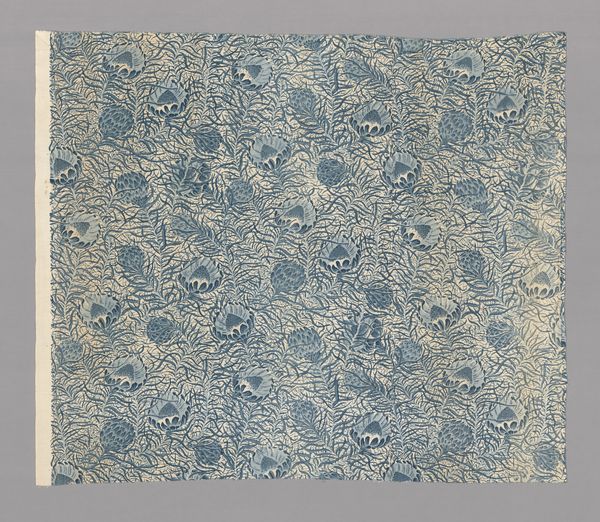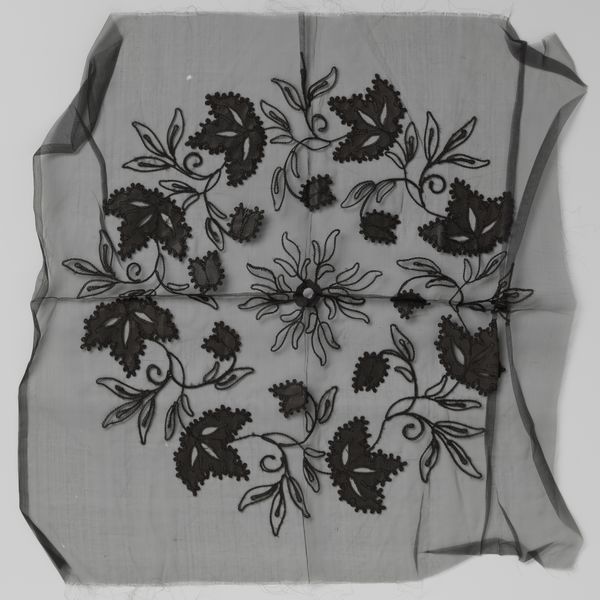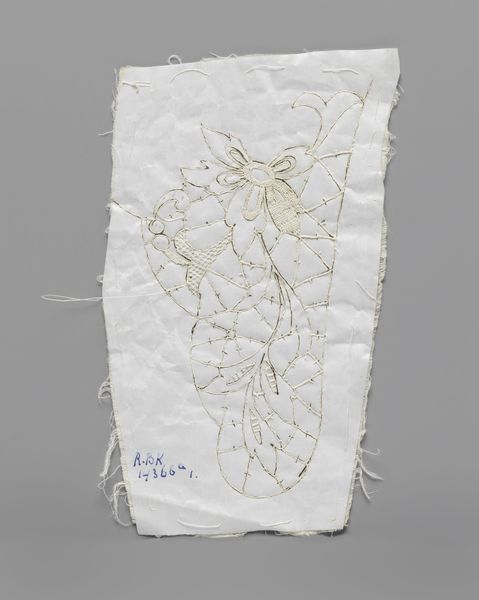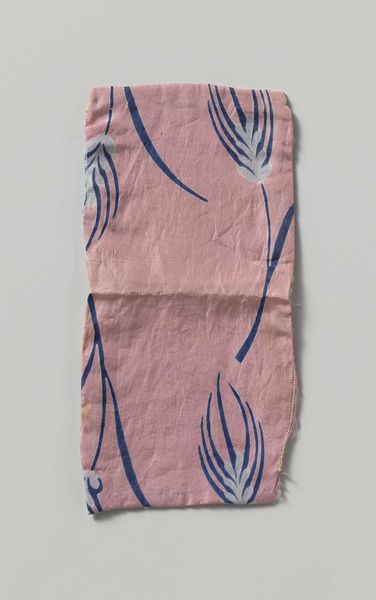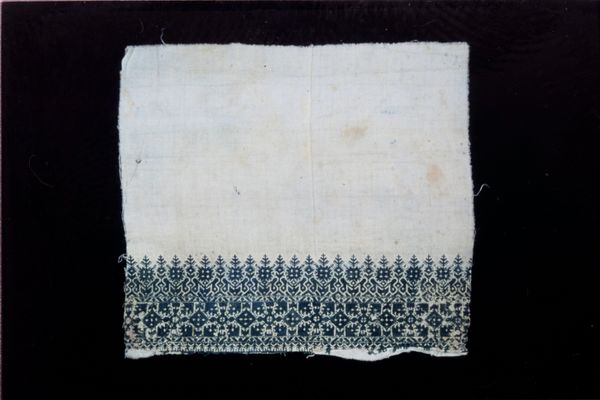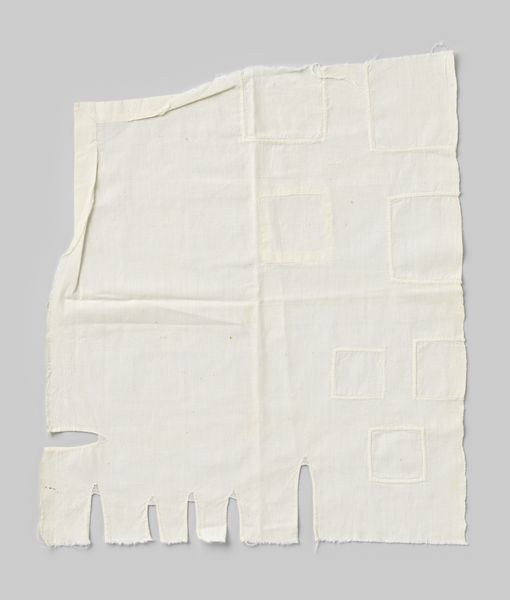
Prikking vastgeregen op een dubbele lap katoen en met traceerdraden voor het maken van een deel van een kraag van naaldkant c. 1915s
0:00
0:00
drawing, mixed-media, fibre-art, textile
#
drawing
#
mixed-media
#
fibre-art
#
fashion mockup
#
arts-&-crafts-movement
#
hand painted
#
hand drawn type
#
textile
#
personal sketchbook
#
embossed
#
sketchbook drawing
#
watercolour bleed
#
imprinted textile
#
sketchbook art
#
foil embossing
Dimensions: height 24.5 cm, width 18 cm
Copyright: Rijks Museum: Open Domain
Editor: This mixed-media piece, dating from around 1915, is called "Prikking vastgeregen op een dubbele lap katoen en met traceerdraden voor het maken van een deel van een kraag van naaldkant." It's got a fascinating texture; you can see the layers and the stitches so clearly. What jumps out at you when you look at it? Curator: Well, this seemingly simple textile sample speaks volumes about the intersections of craft, labour, and gender during the early 20th century. Lace making, traditionally a female occupation, often provided a vital, if underpaid, source of income. What do you think the meticulousness of the design implies about the maker's intentions and social position? Editor: I hadn't considered the social implications that deeply. I guess I was focused on the visual aspects. It feels very intentional, very precise. Was this a common method for designing lace? Curator: Absolutely. The "prikking," or pricking, suggests a process of careful planning and transfer, highlighting the technical skill involved. Now consider the context: it was created around 1915. What historical events might have influenced the production and value of handmade items like lace during this period? Editor: World War One? Maybe lace-making became a way for women to contribute economically while the men were away. Curator: Exactly. The Arts and Crafts movement, which greatly influenced the piece, was in part a reaction to industrialisation. Here, we can observe resistance embedded in the details of everyday life. It compels us to investigate further into their lives, labor, and political agency within broader systems of power. Any final thoughts? Editor: I see it in a completely new light now. It's not just a pretty piece of fabric; it's a document of history. Curator: Indeed. Art often holds the keys to unlocking hidden histories, inviting us to engage with the past in meaningful ways.
Comments
No comments
Be the first to comment and join the conversation on the ultimate creative platform.
